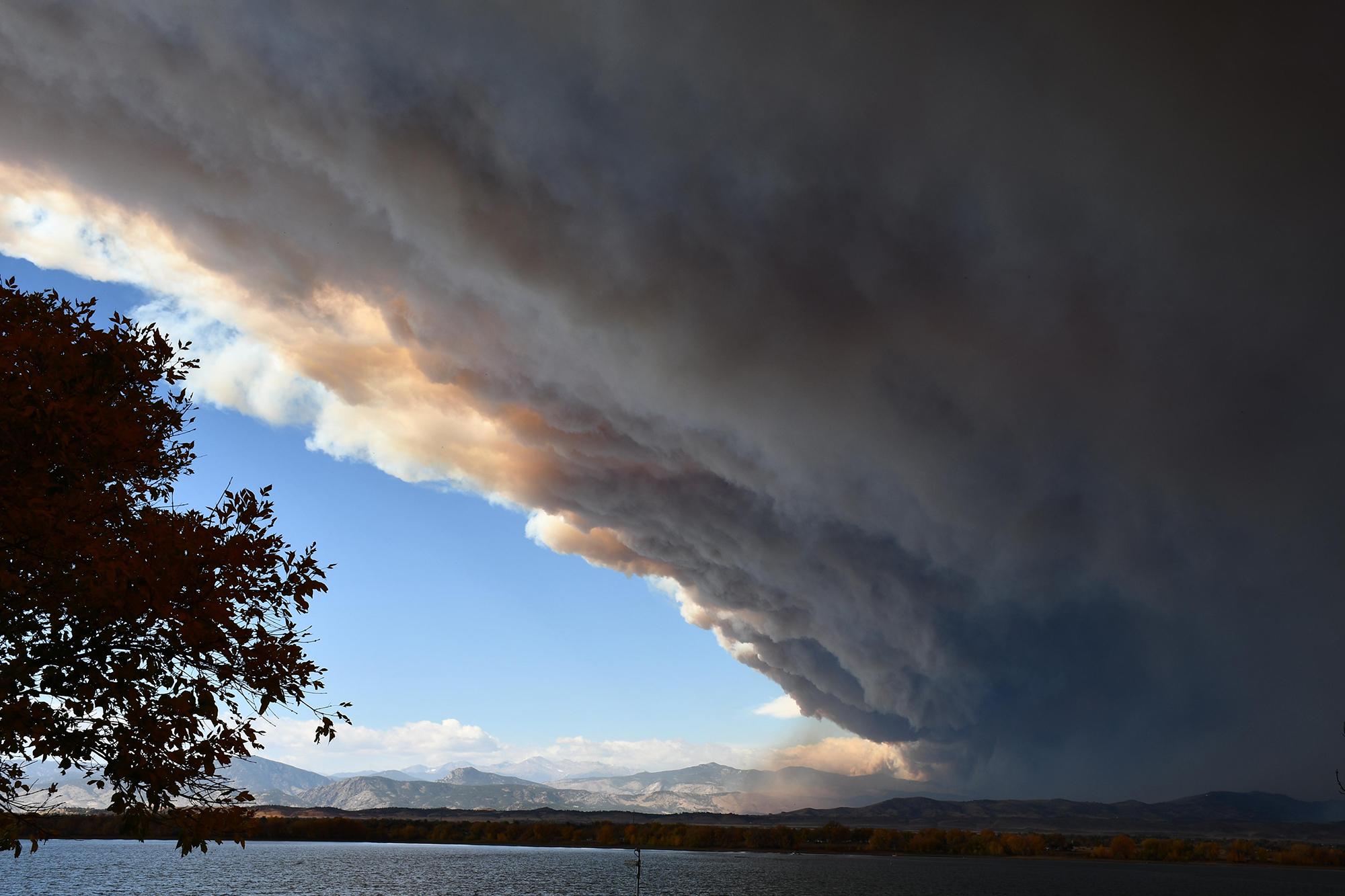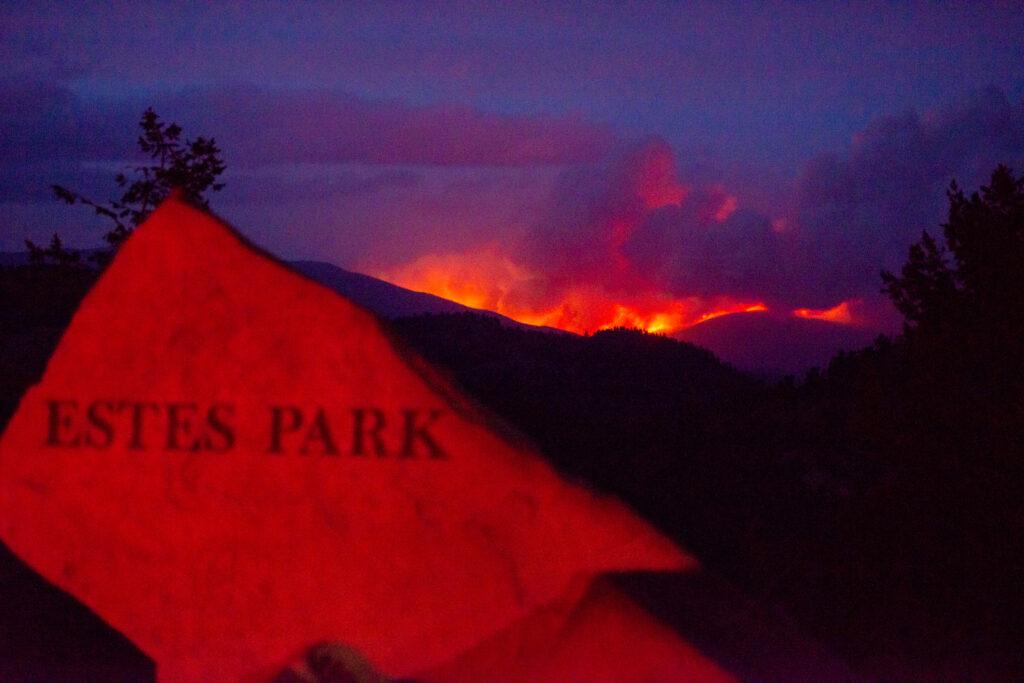
Updated at 6:11 a.m. on Oct. 15, 2020
The Cameron Peak fire that’s been burning west of Fort Collins and north of Estes Park for two months exploded Wednesday afternoon with high winds and dry conditions, scorching nearly 30,000 acres in a single day.
The fire has now burned 164,140 acres and has become the largest fire in Colorado’s recorded history. The Pine Gulch fire, which burned 139,007 acres near Grand Junction this summer, had the title for just 48 days.
Incident team meteorologist Aviva Braun said winds were gusting between 30 and 70 mph from 1 a.m. to 2 p.m. on Wednesday and pushed the south portion of the fire, which had little containment, to the east.
One gust in the afternoon hit 76 mph -- but 70 mph wind gusts blew all over the area Wednesday morning and into the early afternoon, said Russell Danielson, a meteorologist with the National Weather Service in Boulder.
“The wind coming from the west and pushed the fire toward the east quite rapidly today,” Danielson said. “It has moved anywhere from 11 to 15 miles eastward, which is pretty remarkable.”

In what Larimer County Sheriff Justin Smith called an “epic day for evacuations,” at least five communities west of Fort Collins, including Lory State Park, Masonville and Redstone Canyon were ordered to evacuate. Several other communities are under voluntary orders.
The Sheriff's Office is working with people who have been evacuated, said Jared Kramer, a spokesman with the office.
"We go to every residence, knock on the door — try to make contact with anybody who is there,” Kramer said. “If they choose not to leave then we don’t physically force them out but at a certain point we can’t get back in to get them out.”
The massive plume of smoke from the growing fire covered the northern Front Range on Wednesday, and the strong winds carried it all the way to Iowa.
Smith said that Wednesday was a bad day, but that it could have been much worse.
“We have no reported injuries, no deaths, a lot fewer structures were impacted that we truly anticipated based on what we saw with that said, there's certainly a lot of folks that got hit,” he said.
He said there has been structure damage, but that the fire is still too active and the strong winds pushed down too many trees for assessment teams to start counting the number of buildings lost.
The fire has already damaged or destroyed 99 structures.
Smith also said that the fire was unlikely to move into the densely populated areas of Fort Collins and Loveland because it’s mainly fueled by heavy timber in the forest and large bodies of water like Horsetooth Reservoir and Carter Lake act as natural barriers to both cities.
But fire officials expect the fire activity to continue.
- 1 Cameron Peak fire, 2020: 158,300
- 2. Pine Gulch fire, 2020: 139,007
- 3. Hayman fire, 2002: 137,760
- 4. Spring Creek fire, 2018: 108,045
- 5. High Park fire, 2012: 87,284
“Things will calm down a little, but we’re not through this wave of activity yet. Just expect a couple more hard days,” said incident Commander Dan Dallas.
Incident team meteorologist Braun said the strong winds will stick around for the rest of the week and there is no moisture in the forecast.
“The conditions will remain challenging,” she said. “Just not as serious as they were today.”
Dallas is familiar with the area. He was an incident commander during the High Park fire in 2012. That fire grew to more than 87,000 acres, burned down 259 homes and killed one person. And the Cameron Peak fire is now burning in the High Park fire’s scar. But Dallas said that’s a good thing.
“A lot of that has come back to grass and young trees and brush. That doesn't stop the fire, but it slows it down significantly when you have a fire scar. So yes, the High Park fire scar, years later, did help us in a way,” he said.
The Cameron Peak fire has been burning in the Arapahoe and Roosevelt National Forest since Aug. 13. It survived a snow storm in early September and some snowfall on Sunday. But the drought conditions and the wind have kept the fire burning.
More than 1,000 people are battling the fire. It’s 56 percent contained and the cause is still under investigation.









